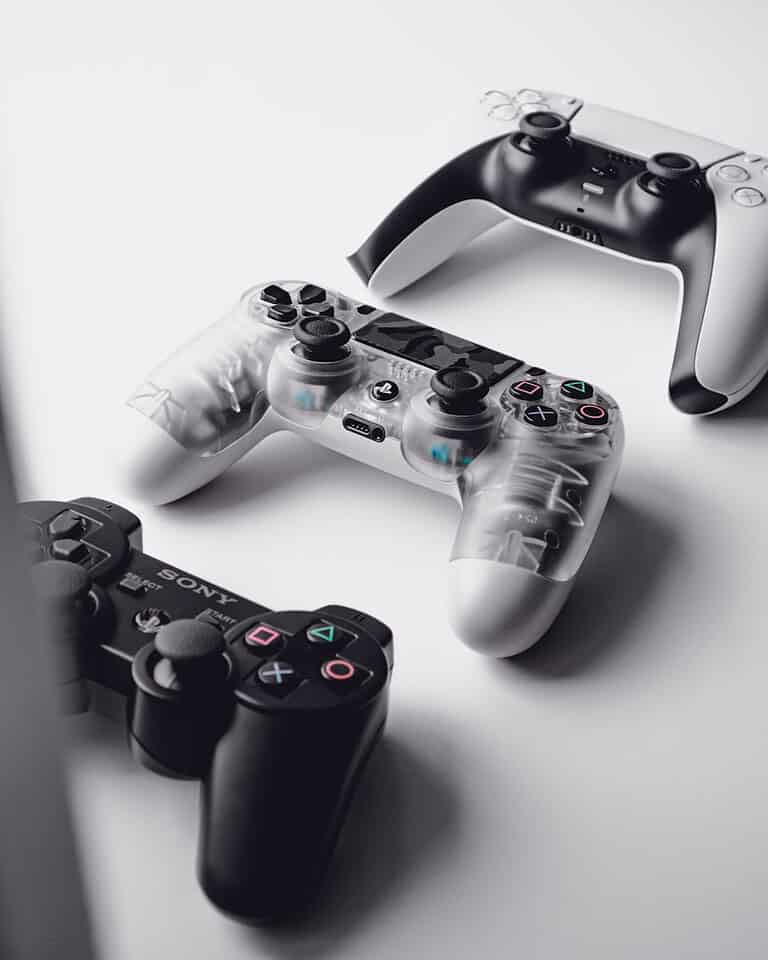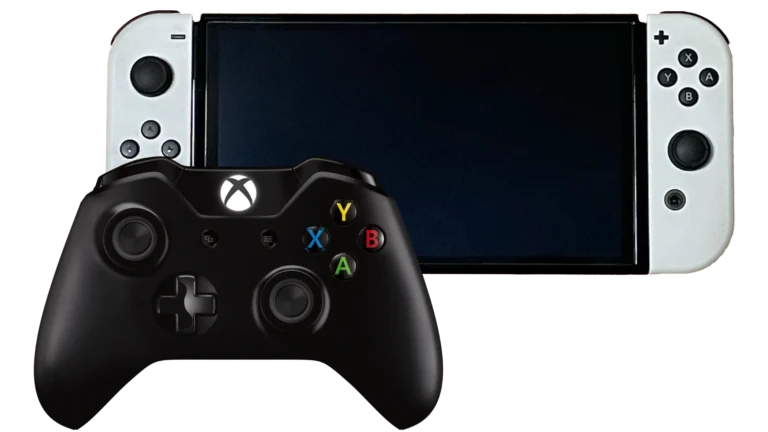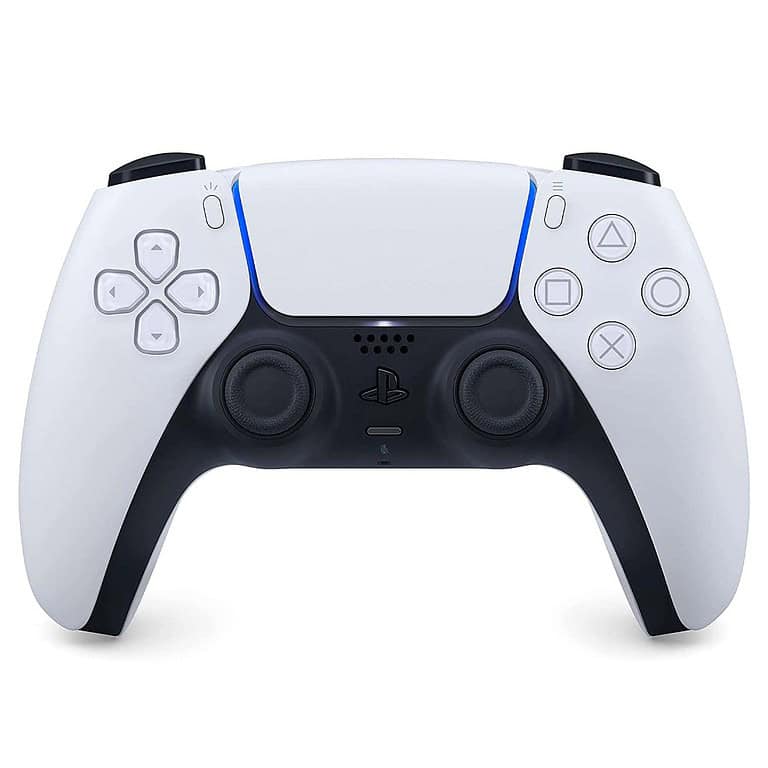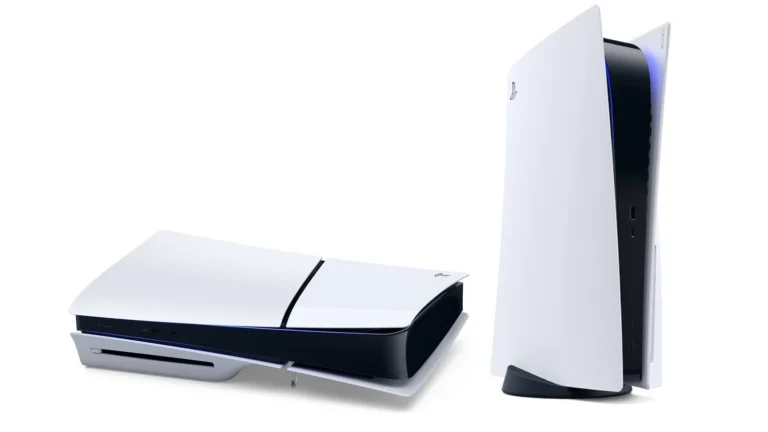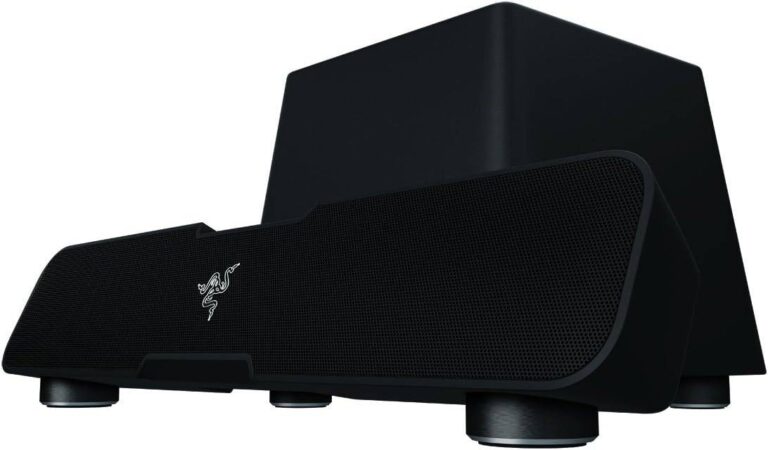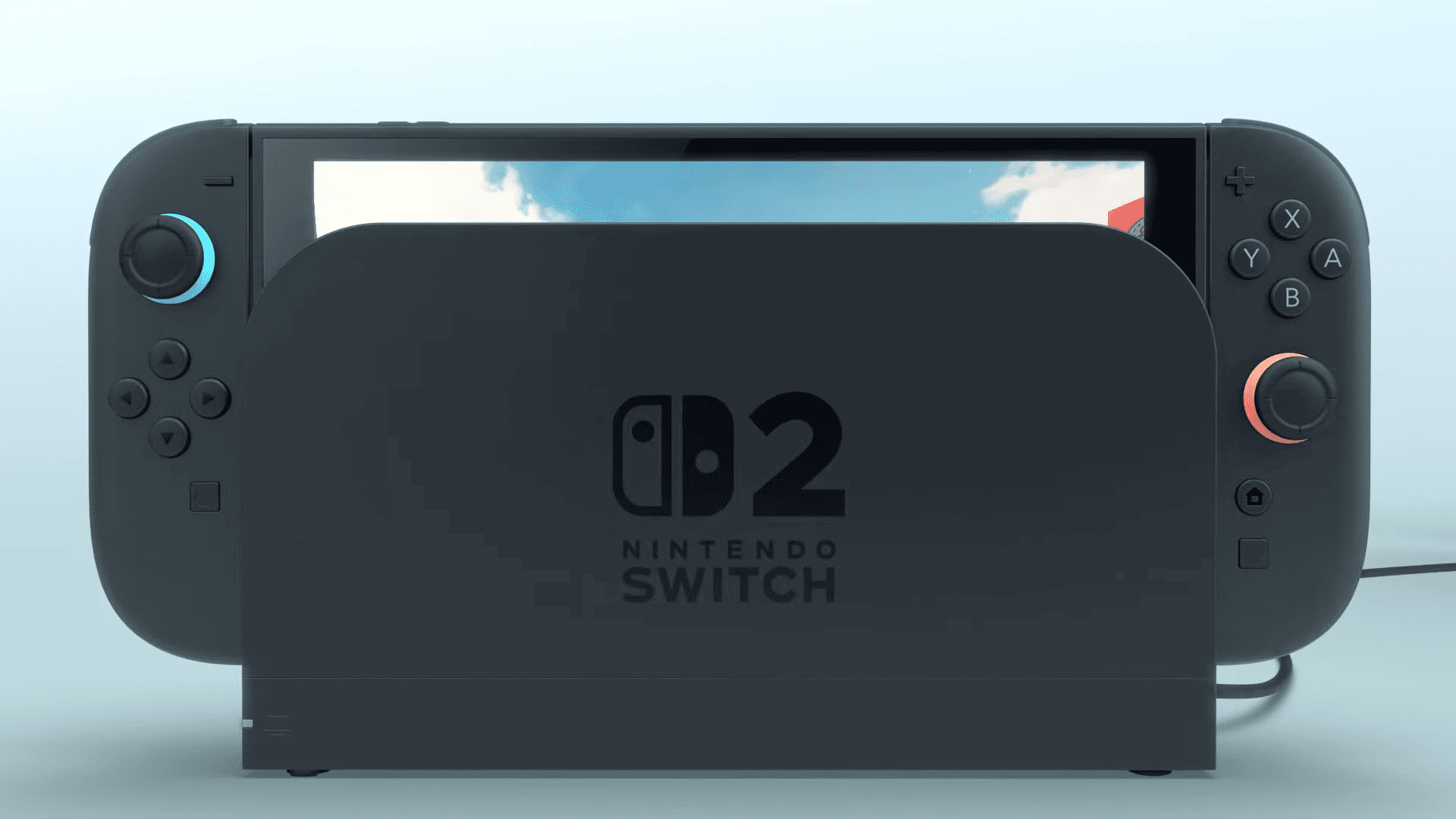
Gamers across the U.S. may soon find themselves shelling out significantly more for their favorite consoles. The Trump administration’s latest round of proposed tariffs—particularly a staggering 145% duty on Chinese imports—has ignited fears that gaming hardware, most of which is produced in China, could be the next major victim of global trade tensions.
With around 87% of gaming consoles in the U.S. market originating from China, the impact is expected to be swift and far-reaching. The Consumer Technology Association (CTA) estimates that console prices could spike by as much as 69%, translating to an average increase of $428 per unit if companies pass those costs directly to consumers.
What That Means for Console Pricing
| Console | Current Price | Projected Price (Post-Tariff) | Increase |
|---|---|---|---|
| Xbox Series X | $499.99 | $599.99 – $650+ | +$100 to $150 |
| PlayStation 5 Pro | $699.99 | $799.99 – $850+ | +$100 to $150 |
| Nintendo Switch 2 | $449.99 | $500 – $550 | +$50 to $100 |
Tariff-induced price hikes are already being felt. Microsoft recently bumped up the U.S. retail price of the Xbox Series X by $100 and plans to raise game prices to $79.99 later this year. Sony has quietly increased the PlayStation 5 Digital Edition price in certain international markets, while Nintendo’s Switch 2, set to launch later this year, will debut at $449.99—its most expensive system ever. Analysts widely believe this pricing reflects tariff anticipation despite Nintendo’s public focus on the console’s upgraded features.
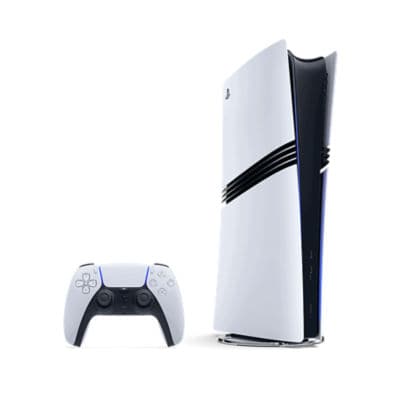
The Bigger Picture: Hardware, Games & Accessories Affected
Tariffs don’t just raise the sticker price of consoles—they ripple through the entire gaming ecosystem. Expect to see:
- Higher prices on accessories like controllers, headsets, and charging docks
- Increases in the price of digital and physical games, especially from first-party studios
- Supply chain delays and smaller stockpiles heading into the holiday season
- Potential dips in console adoption rates and game spending
For game developers and publishers, this could translate into a contraction in consumer spending, which may affect future investments in AAA titles or hardware innovations. Smaller studios might be hit hardest if gamers divert funds away from new titles to afford the console itself.
Trade Policy Uncertainty: The 90-Day Countdown
Currently, a 90-day pause on certain reciprocal tariffs is set to expire in July 2025. If no new deal is reached or if tariffs are extended, the consumer electronics market could face months of price instability. Reports suggest that the administration is weighing a potential reduction of the 145% tariffs to a still-hefty range between 50% and 54%, but no formal policy has been enacted yet.
Meanwhile, analysts from Morgan Stanley report a sharp dip in consumer confidence regarding electronics purchases. A recent survey showed that nearly 1 in 3 potential buyers are delaying purchases, particularly of high-ticket items like gaming consoles, due to tariff concerns and inflationary pressures.
Should You Buy Now?
If you’ve been on the fence about upgrading or buying a console, now may be the time to pull the trigger. With manufacturers, retailers, and supply chains all reacting to the shifting tariff landscape, prices could rise again quickly—and steeply. Pre-owned and refurbished consoles may also see a surge in demand as buyers seek alternatives to avoid paying inflated retail prices.
In an industry already adjusting to post-pandemic demand normalization and semiconductor volatility, the potential for tariffs to upend pricing again is a major development. For gamers, the bottom line is simple: your next console could cost a lot more than you expect.
What Game Console Should I Buy
Choosing a game console is a big decision, and with several powerful options on the market, it can be tough to figure out which one is right for you. Each console has its own strengths and weaknesses, catering to different types of gamers and preferences.
This guide breaks down the pros and cons of the major players in the current console generation to help you make an informed choice.
PlayStation 5 (Standard and Pro)
Sony’s PlayStation 5 comes in two main flavors: the standard model and the recently released PS5 Pro. Both offer a significant leap in performance over the previous generation, with fast loading times thanks to their custom SSDs, and support for features like ray tracing.
PlayStation 5 (Standard)
- Pros:
- Strong Exclusive Game Library: PlayStation is known for its critically acclaimed first-party titles like Marvel’s Spider-Man 2, God of War Ragnarök, and Horizon Forbidden West.
- Innovative DualSense Controller: The haptic feedback and adaptive triggers offer a truly immersive gaming experience in supported titles.
- Fast Loading Times: The custom SSD drastically reduces loading screens, getting you into games quicker.
- Backward Compatibility: Plays most PS4 games.
- Cons:
- Storage Space: The usable storage on the internal SSD is somewhat limited, especially with large modern game file sizes.
- Variable Performance in Some Games: While powerful, some demanding titles may require choosing between resolution and frame rate on the standard model.
- Online Subscription Required for Multiplayer: Like other consoles, you need a PlayStation Plus subscription to play most games online, which is an additional cost.
PlayStation 5 Pro
- Pros:
- Enhanced Performance and Graphics: With a more powerful GPU, the PS5 Pro delivers improved frame rates, better ray tracing, and the ability to run games at higher resolutions or with more graphical effects enabled simultaneously.
- PlayStation Spectral Super Resolution (PSSR): This AI-driven upscaling technology provides sharper images, potentially allowing for near-4K visuals even when rendering at a lower resolution.
- Larger 2TB SSD: Offers significantly more storage space out of the box compared to the standard PS5.
- Improved for 120Hz Displays: Better equipped to take advantage of high refresh rate TVs and monitors with smoother gameplay options.
- Cons:
- Higher Price Point: The PS5 Pro is more expensive than the standard PS5.
- Still Large: While slightly different in design, it remains a relatively large console.
- Requires Compatible Games for Full Benefit: To truly see the advantages of the Pro, games need to be specifically enhanced for the hardware.
Xbox Series X
Microsoft’s flagship console, the Xbox Series X, is a performance powerhouse known for its raw graphical capability and the value offered by Xbox Game Pass.
- Pros:
- Most Powerful Console (Raw Specs): Boasts impressive hardware, capable of native 4K resolution and up to 120 frames per second in supported games.
- Xbox Game Pass: A subscription service that provides access to a large and rotating library of games, including all first-party Xbox titles on day one. This offers excellent value for many gamers.
- Backward Compatibility: Supports a vast library of games spanning four generations of Xbox consoles.
- Quick Resume: Allows you to seamlessly switch between multiple games without losing your progress.
- Good as a Media Center: Functions well as a home entertainment hub with various streaming apps.
- Cons:
- Fewer Console Exclusive Titles (Historically): While this is changing with Microsoft’s studio acquisitions, some of their major releases are also available on PC.
- UI Can Be Cluttered: Some users find the dashboard interface less intuitive than competitors.
- Pricey Proprietary Storage Expansion: Expanding the internal storage requires buying expensive proprietary expansion cards to maintain the same performance.
Xbox Series S
The smaller, more affordable counterpart to the Series X, the Xbox Series S is designed as an entry point into the next generation of gaming, primarily targeting 1080p or 1440p resolution.
- Pros:
- Affordable Price: The least expensive of the current generation consoles, making it a great budget-friendly option.
- Compact Design: Its small size makes it easy to fit into any entertainment setup.
- Fast Loading Times and Quick Resume: Benefits from the same Velocity Architecture as the Series X for quick loading and seamless game switching.
- Excellent Game Pass Machine: A very cost-effective way to access the extensive Game Pass library.
- Cons:
- Lower Performance and Resolution: Games typically run at lower resolutions and potentially lower frame rates compared to the Series X or PS5.
- No Disc Drive: It is a digital-only console, meaning you cannot play physical game discs.
- Limited Storage Space: The internal SSD has even less usable space than the standard PS5, and expanding it is costly.
- Some Games May Compromise on Features: Due to the less powerful hardware, some games might have reduced graphical features compared to their Series X counterparts.
Nintendo Switch (Standard, OLED, and Lite)
Nintendo’s unique hybrid console offers the flexibility of playing at home on a TV or on the go in handheld mode. It has a different focus than the PlayStation and Xbox consoles, prioritizing innovative gameplay and exclusive Nintendo titles.
- Pros:
- Hybrid Functionality: Can be played as a home console or a portable handheld device.
- Outstanding First-Party Games: Home to beloved and critically acclaimed franchises like The Legend of Zelda, Mario, Pokémon, and Animal Crossing.
- Innovative Gameplay: The Joy-Con controllers allow for unique motion controls and local multiplayer experiences out of the box.
- Great for All Ages: Offers a wide variety of games appealing to a broad audience.
- OLED Model has a Vibrant Screen: The Switch OLED model features a significantly improved display for handheld gaming.
- Cons:
- Lower Graphical Power: Significantly less powerful than the PS5 and Xbox Series consoles, resulting in lower resolutions and frame rates in many third-party games.
- Online Service is Less Robust: Nintendo Switch Online is functional but generally considered less featured than PlayStation Plus or Xbox Game Pass.
- Smaller Internal Storage: The base internal storage is quite small, requiring a microSD card for most users.
- Joy-Con Drift Issues: Some users have experienced issues with the analog sticks on the Joy-Con controllers developing drift.
- Third-Party Ports Can Be Subpar: Due to the power difference, some third-party games ported to the Switch may have graphical or performance compromises.
Ultimately, the best console for you depends on your individual needs and preferences. Consider what types of games you enjoy, whether exclusive titles are important to you, if you prioritize graphical performance or portability, and your budget.
Evaluating Gaming Needs
Choosing a game console can feel overwhelming with so many options available today. The PlayStation 5, Xbox Series X/S, and Nintendo Switch each offer unique experiences that cater to different types of gamers. The Nintendo Switch is currently the most popular console choice due to its versatility and exclusive games like Mario Kart, while the PS5 Slim offers the best overall performance and power in a more compact design.
Your decision should depend on what matters most to you as a gamer. If you value cutting-edge graphics and performance, the PS5 Slim might be your best bet. For those who prioritize game variety and value, the Xbox Series X or S with Game Pass provides access to hundreds of games for a monthly fee. If you enjoy family-friendly titles or want the flexibility to play both at home and on the go, the Nintendo Switch stands out as a favorite.
Key Takeaways
- Your gaming preferences and needs should guide your console choice, not just technical specifications.
- Nintendo Switch offers versatility for portable and home play, while PS5 provides premium performance for serious gamers.
- Consider the exclusive games, online services, and ecosystem benefits when choosing between PlayStation, Xbox, and Nintendo platforms.
Before deciding which console to buy, you need to understand your gaming preferences and habits. Knowing what type of games you enjoy and how you plan to use your console will help narrow down the best options.
Different Types of Gaming
Console gaming offers a traditional experience with powerful hardware for playing on your TV. The PlayStation 5 and Xbox Series X deliver high-performance gaming with stunning graphics for AAA titles.
Handheld gaming gives you flexibility to play anywhere. The Nintendo Switch dominates this category, offering both portable and TV play options.
Cloud gaming is newer and lets you stream games without expensive hardware. This option depends on your internet connection quality but offers access to many titles without a physical console.
Consider where and when you’ll play most. Do you need gaming on the go? Or will you primarily play at home on a large screen?
Assessing Game Preferences
Game libraries vary significantly between platforms. Each console has exclusive games you can’t play elsewhere.
PlayStation is known for story-driven exclusives like God of War and Horizon. Xbox offers Halo and Forza, plus the value of Game Pass, a subscription with hundreds of games.
Nintendo focuses on family-friendly titles featuring Mario, Zelda, and Pokémon.
Make a list of must-have games and check which console has them. Consider:
- Which exclusives appeal to you most?
- Do you prefer competitive or solo games?
- Are you interested in older classics or mainly new releases?
Your gaming preferences should guide your console choice rather than just specs or price points.
Comparing Console Specifications
When choosing a gaming console, understanding the technical aspects can help you make an informed decision. Modern consoles differ significantly in their capabilities, interface options, and available services that might impact your gaming experience.
Hardware and Performance
The PlayStation 5 and Xbox Series X lead the pack with impressive processing power. Both consoles feature 8-core AMD Zen 2 CPUs, though the Xbox Series X has a slight edge with its 12 teraflops of GPU power compared to the PS5’s 10.28 teraflops. The PlayStation 5 Pro is now available as an upgraded option with enhanced performance capabilities.
The Nintendo Switch uses a custom Nvidia Tegra processor that’s less powerful but perfectly suited for its games. The Xbox Series S is Microsoft’s budget option with 4 teraflops of GPU power, designed for 1440p gaming rather than 4K.
Loading times are dramatically reduced on newer consoles thanks to their custom SSDs. This means you’ll spend more time playing and less time waiting for games to load.
| Console | CPU | GPU | Storage |
|---|---|---|---|
| PS5 | 8-core AMD Zen 2 | 10.28 TF RDNA 2 | 825GB SSD |
| Xbox Series X | 8-core AMD Zen 2 | 12 TF RDNA 2 | 1TB SSD |
| Switch | Custom Nvidia Tegra | 0.5 TF | 32GB (expandable) |
Graphics and Display Technology
The PS5 and Xbox Series X both support gaming at up to 4K resolution and 120fps, with ray tracing technology for realistic lighting. If you have a compatible TV, these features can dramatically improve your visual experience.
The PlayStation 5 Pro offers enhanced graphics performance over the standard model, making it ideal for gamers who prioritize visual fidelity. Some PS5 models feature an OLED display option, providing deeper blacks and more vibrant colors.
Nintendo Switch operates at 1080p when docked and 720p in handheld mode. The Switch OLED model features a 7-inch OLED screen that significantly improves the visual quality in portable mode with richer colors and better contrast.
The Xbox Series S targets 1440p resolution rather than 4K, making it perfect if you don’t have a 4K TV yet still want next-gen performance.
Software and Ecosystem
Each console offers distinct software experiences and subscription services. Xbox Game Pass provides access to hundreds of games for a monthly fee, including day-one releases of Microsoft titles. Many gamers recommend Xbox specifically for Game Pass.
PlayStation Plus has evolved to offer multiple tiers with game collections, online play, and cloud streaming. PlayStation exclusives like God of War and Horizon are major draws for many players.
Nintendo’s ecosystem centers around its beloved franchises like Mario, Zelda, and Pokémon. The Nintendo Switch is recommended specifically for games like Mario Kart.
Regular system updates add new features to all consoles. Both PlayStation and Xbox support backward compatibility with previous generation games, while Nintendo offers classic games through its subscription service.
Reviewing Platform Services
Modern game consoles offer much more than just hardware—their digital services can make or break your gaming experience. The value of subscription options and online features often determines long-term satisfaction with your console choice.
Game Libraries and Subscription Services
When choosing a console, the available games and subscription services significantly impact your overall value. Xbox Game Pass stands out as one of the best deals in gaming, offering hundreds of titles for a monthly fee. This includes day-one releases of Microsoft’s first-party games.
PlayStation offers PlayStation Plus in various tiers, providing a rotating selection of games and classics from previous PlayStation generations. The higher tiers give you access to a larger game catalog, though it typically doesn’t include brand-new releases like Game Pass does.
Nintendo’s subscription is more affordable but offers a smaller library focused on retro titles.
For PC-style flexibility on consoles, services like Steam’s library and Epic Games Store remain exclusive to gaming PCs, offering frequent sales and free games.
Online Capabilities and Multiplayer Support
All modern consoles require paid subscriptions for online multiplayer gaming. Xbox Live Gold and PlayStation Plus provide the basic online functionality needed for multiplayer games, while Nintendo Switch Online is less expensive but offers less robust online features.
Cloud gaming has become increasingly important, with Xbox leading through Xbox Cloud Gaming (included with Game Pass Ultimate). This lets you stream games to mobile devices or less powerful computers without downloading.
PlayStation offers PS5 Remote Play and PlayStation Now streaming, though their cloud infrastructure isn’t as developed as Microsoft’s.
Connection stability varies between platforms, with Xbox and PlayStation providing more reliable online experiences than Nintendo’s services. Cross-platform play has become more common, allowing you to play with friends regardless of their console choice in many popular titles.
Exploring Console Features
When choosing a game console, understanding the physical design and user experience features can make a huge difference in your gaming enjoyment. These elements often separate good gaming experiences from great ones.
Controller Design and Ergonomics
The controller you’ll hold for hundreds of hours deserves careful consideration. The PlayStation 5’s DualSense controller stands out with innovative haptic feedback and adaptive triggers that change resistance based on in-game actions. This creates immersive experiences like feeling raindrops or the tension of a bowstring.
Xbox controllers offer excellent ergonomics with a comfortable grip that works well for lengthy gaming sessions. They’re also compatible with PCs, giving you more flexibility.
The Nintendo Switch offers unique detachable controllers called Joy-Cons that support motion controls and can be used individually for multiplayer games right out of the box.
Consider how the controller feels in your hands. Weight, button placement, and stick resistance all affect comfort during extended play sessions.
Portable and Hybrid Gaming Options
The Nintendo Switch revolutionized gaming as a true hybrid console—play on your TV or take it on the go. The standard Switch offers versatility, while the Nintendo Switch OLED provides a better screen for portable play.
For pure portability, the Nintendo Switch Lite is lighter, smaller, and less expensive, though it can’t connect to a TV.
Battery life is crucial for portable gaming. The improved Switch model offers 4.5-9 hours, while the Lite manages 3-7 hours depending on the game.
Handheld options are perfect for:
- Commuters
- Travelers
- Families sharing TV space
- Gaming in multiple rooms
Remember that portable systems often make some performance compromises compared to their stationary counterparts.
User Interface and Accessibility
A console’s interface affects how easily you can find and play games. Xbox and PlayStation interfaces are designed for intuitive navigation, while the Switch offers a simpler, streamlined experience.
Parental controls vary between platforms. Nintendo provides exceptional family-friendly options with detailed time limits and content restrictions through a smartphone app. PlayStation and Xbox also offer robust parental controls to monitor gameplay time and restrict mature content.
Accessibility features have improved significantly in recent years. Xbox leads with the Adaptive Controller for players with limited mobility, while PlayStation offers extensive visual, audio, and control customization.
Consider digital assistants, voice commands, and screen readers if these features would improve your gaming experience.
Considerations for Exclusive Content
Exclusive games often become the deciding factor when choosing between consoles. These titles are designed specifically for one platform and showcase its unique features and capabilities.
Importance of Exclusive Titles
Exclusive games can make or break your console experience. When buying a console for exclusives, you’re investing in unique gaming experiences unavailable elsewhere. Nintendo’s exclusives like Zelda titles offer distinct gameplay that differs greatly from PlayStation’s cinematic adventures or Xbox’s selection.
Consider which exclusive franchises align with your preferences. PlayStation offers story-driven AAA titles with stunning visuals, while Nintendo focuses on family-friendly adventures with innovative gameplay mechanics.
The controller and system features often enhance these exclusive experiences. For example, PlayStation’s DualSense provides haptic feedback that makes exclusive games more immersive, while Nintendo’s portable Switch allows you to take exclusive games anywhere.
Upcoming Releases and Future-Proofing
Looking at announced future releases helps ensure your console remains relevant for years. Major franchises like COD may have timed exclusivity deals that give one platform early access or special content.
Check release calendars and developer announcements before making your decision. Some studios have been acquired by console manufacturers, meaning their future games will likely be exclusive to specific platforms.
New hardware features like PSVR2 often come with exclusive titles designed to showcase these technologies. If you’re interested in virtual reality gaming, these platform-specific accessories and their exclusive content should factor into your decision.
Remember that console lifecycles typically last 5-7 years, so considering which gaming features you can’t live without helps ensure you won’t regret your choice when exciting new exclusives are announced.
Financial Considerations
Money plays a big role when choosing your next gaming console. Your budget affects not just the initial purchase but also how much you’ll spend over time.
Initial Cost and Ongoing Expenses
The Xbox Series S offers excellent value at around $240-300, making it the most affordable current-generation option. The digital-only design keeps costs down but means you’ll buy all games digitally.
The PlayStation 5 Digital Edition costs about $400, while the disc version runs $500. This price difference can be significant if you’re on a tight budget.
The Nintendo Switch starts at $300 for the standard model, with the OLED version at $350 and the Lite at $200.
Beyond the console, consider these ongoing costs:
- Games: $40-70 each for new titles
- Subscription services: $60-180 annually (Xbox Game Pass, PlayStation Plus, Nintendo Online)
- Extra controllers: $40-80 each
- Storage expansions: $100-230
Resale Value and Market Trends
Nintendo systems typically hold their value extremely well. Even years after release, Nintendo Switch consoles often resell for 70-80% of their original price.
PlayStation and Xbox consoles depreciate more quickly but still maintain decent resale value during their generation’s lifetime. Limited editions and special models often retain value better than standard versions.
Market shortages can affect pricing dramatically. During the PS5’s first two years, resale prices sometimes reached double the retail price due to limited availability.
Consider buying during sales periods like Black Friday or holiday promotions when you might save 15-25% on bundles. Gaming systems often come with added bonuses during these sales events.
Digital-only consoles typically have lower resale value since the games purchased can’t be transferred or resold with the system.
Technical Features and Enhancements
Modern gaming consoles offer impressive technical capabilities that enhance your gaming experience. Understanding these features can help you make a more informed purchase decision.
Support for Advanced Gaming Technologies
When shopping for a console, pay attention to resolution capabilities. The PlayStation 5 Pro supports enhanced 4K gaming with improved frame rates compared to the standard model. This means sharper visuals and smoother gameplay in demanding titles.
Variable refresh rate (VRR) is another important feature to consider. This technology synchronizes your console’s output with your TV’s refresh rate, reducing screen tearing and stuttering during gameplay. Most current-gen consoles like the PS5 and Xbox Series X support VRR, but you’ll need a compatible display to benefit from it.
Hardware specifications vary significantly between systems. The Xbox Series X offers more raw power than the Series S, which lacks a disc drive and has less storage. Similarly, the Steam Deck LCD provides PC-level gaming in a handheld format but with different performance expectations than traditional consoles.
Compatibility with Other Devices and Services
Cloud gaming services have expanded how you can use your console. Xbox Game Pass Ultimate lets you stream games to mobile devices and PCs without downloading them, providing flexibility in where and how you play.
Cross-platform compatibility is increasingly important. Check if the console allows you to play with friends who own different systems. Many popular titles now support cross-play between PlayStation, Xbox, and PC.
Consider how a console integrates with your existing setup. Modern systems offer HDMI-CEC support, allowing you to control your TV and console with a single remote. Most consoles can also function as entertainment hubs with apps like Netflix and Disney+.
Backward compatibility varies by platform. Xbox Series consoles play most Xbox One games and many titles from earlier generations. The PS5 plays most PS4 games but has limited support for older PlayStation titles through emulation and PS Plus Premium.
Brand Ecosystem and Community
When buying a game console, you’re not just purchasing hardware—you’re joining a brand’s ecosystem and community. Each major gaming company offers unique online services, exclusive games, and community features that greatly impact your gaming experience.
Microsoft Xbox Ecosystem
Xbox offers a comprehensive digital ecosystem centered around Xbox Game Pass, a subscription service that gives you access to hundreds of games for a monthly fee. This top gaming console comes with impressive backward compatibility, allowing you to play many Xbox 360 titles on your Xbox Series X.
Microsoft’s ecosystem extends beyond the console to PC gaming through Windows integration. Your game purchases, achievements, and friends list sync across devices when you sign in with your Microsoft account.
Xbox Live Gold provides online multiplayer capabilities, while the Xbox app connects you to friends and your game library from your smartphone. The Xbox community is known for its focus on online multiplayer games and social features.
The Xbox Series X controller works seamlessly with Windows PCs, tablets, and phones, extending your gaming options beyond the console itself.
Sony PlayStation Ecosystem
The PlayStation ecosystem revolves around exclusive titles and a robust online network. With the PlayStation 5, you gain access to PlayStation Plus, which offers online multiplayer, monthly free games, and cloud storage for game saves.
Sony’s focus on exclusive games means you’ll find titles like God of War and Horizon that aren’t available on other platforms. The PlayStation Store regularly features sales on digital games and content.
The PlayStation app lets you purchase games remotely, manage your console, and chat with friends. PlayStation was named Console of the Year in the TechRadar Choice Awards, reflecting its popularity and quality.
PlayStation’s Remote Play feature allows you to stream games from your console to compatible devices like smartphones, tablets, and computers. This flexibility extends your gaming beyond the living room.
PlayStation communities tend to focus on single-player narrative experiences alongside competitive online games.
Nintendo Community
Nintendo has crafted a unique ecosystem focused on family-friendly gaming and exclusive franchises. The Nintendo Switch is the most popular console according to Wirecutter, offering both home console and portable play options.
Nintendo’s online service is more affordable than its competitors but offers fewer features. You’ll get access to classic NES and SNES games as part of your subscription, adding nostalgic value.
The Nintendo community stands out for its dedication to first-party games like Mario, Zelda, and Animal Crossing. These exclusive titles drive much of the platform’s appeal and community discussion.
Nintendo has maintained backwards compatibility between the Switch and its games, unlike the limited compatibility between the Wii U and prior systems. This commitment helps preserve your game library value.
Nintendo’s family-focused approach includes robust parental controls and multiplayer games designed for local co-op play, making it ideal for family gaming sessions.
Frequently Asked Questions
Choosing the right game console involves considering several key factors like your gaming preferences, budget, and specific features you need. Let’s address some common questions to help you make the best decision.
What are the top gaming consoles currently on the market?
The current market leaders include the PlayStation 5, Xbox Series X/S, and Nintendo Switch. The PS5 is known for overall performance, while the Xbox Series X offers comparable power.
The Nintendo Switch remains highly popular due to its versatility and exclusive games. It’s favored by many Wirecutter staffers and continues to be a top seller.
Each console has its strengths—PlayStation for exclusive titles, Xbox for Game Pass, and Nintendo for family-friendly games and portability.
How do I choose the best game console for my family’s needs?
Consider what types of games your family enjoys. This is one of the major questions to ask yourself before making a purchase.
Check game ratings to ensure they’re appropriate for your children. Games rated E (Everyone) are generally family-friendly, while those rated T (Teen) may require parental guidance.
Also consider your budget and space constraints. Some consoles require more room for setup and accessories than others.
What are the key differences between the latest gaming consoles?
PlayStation 5 offers powerful hardware and exclusive titles like God of War and Horizon. It has impressive 4K graphics and an innovative controller with haptic feedback.
Xbox Series X provides similar power but focuses on its Game Pass subscription service that gives you access to hundreds of games for a monthly fee.
Nintendo Switch prioritizes unique gameplay and portability over graphics power. It can be played as a handheld device or connected to your TV.
Which consoles offer the best value for beginners?
The Xbox Series S is an affordable entry point with digital games only and access to Game Pass. It’s less powerful than the Series X but much more budget-friendly.
PlayStation 4 remains a good value option with a massive game library at reduced prices. Many new games are still released for PS4 despite the PS5’s existence.
Nintendo Switch is recommended for first-time console owners who value versatility and family-friendly games.
What features should I look for when selecting a game console?
Storage capacity is crucial—modern games require significant space. Most consoles offer expandable storage options.
Online services vary between platforms. Consider whether you’ll need subscriptions for multiplayer gaming.
Backward compatibility lets you play games from previous console generations. Xbox currently offers the most comprehensive backward compatibility.
Controller comfort and features matter for long gaming sessions. Try holding different controllers if possible before deciding.
How do user reviews and ratings influence the decision to purchase a game console?
User reviews can reveal real-world performance issues that specifications don’t show. They often highlight problems with reliability, noise levels, or software bugs.
Professional reviews provide more technical analysis and comparisons. They typically evaluate consoles based on objective criteria.
Both types of feedback should be considered, but remember that personal preferences vary. What works well for one gamer may not suit your specific needs.

